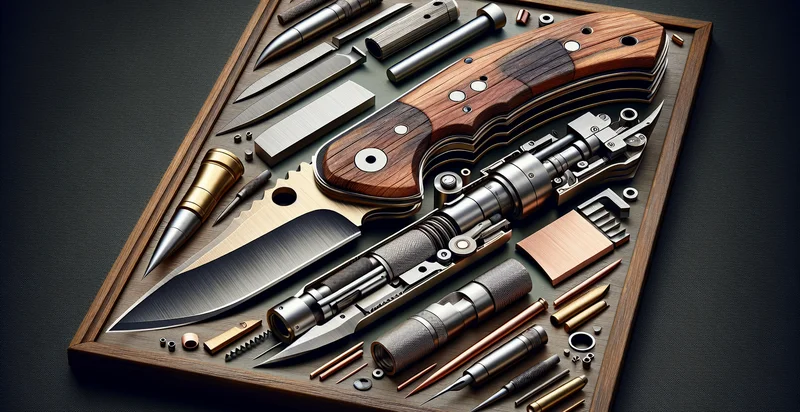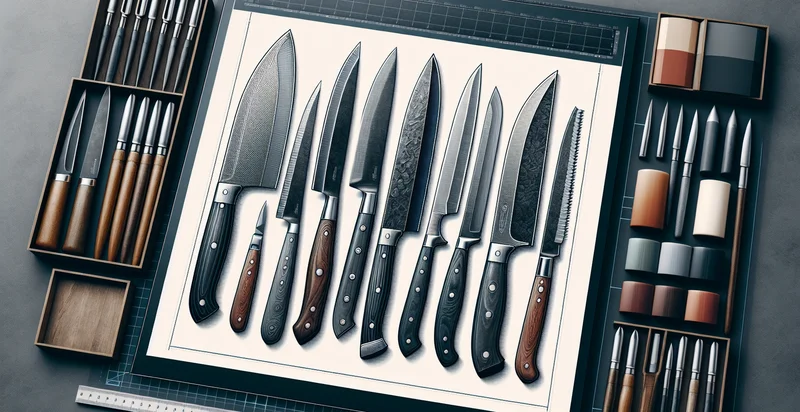Identify what material a knife is made from
using AI
Below is a free classifier to identify what material a knife is made from. Just upload your image, and our AI will predict what material a knife is made from - in just seconds.

Contact us for API access
Or, use Nyckel to build highly-accurate custom classifiers in just minutes. No PhD required.
Get started
import nyckel
credentials = nyckel.Credentials("YOUR_CLIENT_ID", "YOUR_CLIENT_SECRET")
nyckel.invoke("what-material-a-knife-is-made-from", "your_image_url", credentials)
fetch('https://www.nyckel.com/v1/functions/what-material-a-knife-is-made-from/invoke', {
method: 'POST',
headers: {
'Authorization': 'Bearer ' + 'YOUR_BEARER_TOKEN',
'Content-Type': 'application/json',
},
body: JSON.stringify(
{"data": "your_image_url"}
)
})
.then(response => response.json())
.then(data => console.log(data));
curl -X POST \
-H "Content-Type: application/json" \
-H "Authorization: Bearer YOUR_BEARER_TOKEN" \
-d '{"data": "your_image_url"}' \
https://www.nyckel.com/v1/functions/what-material-a-knife-is-made-from/invoke
How this classifier works
To start, upload your image. Our AI tool will then predict what material a knife is made from.
This pretrained image model uses a Nyckel-created dataset and has 13 labels, including Aluminum, Carbon Fiber, Ceramic, Cobalt, Copper, Glass, High Carbon Steel, Metal, Plastic and Stainless Steel.
We'll also show a confidence score (the higher the number, the more confident the AI model is around what material a knife is made from).
Whether you're just curious or building what material a knife is made from detection into your application, we hope our classifier proves helpful.
Related Classifiers
Need to identify what material a knife is made from at scale?
Get API or Zapier access to this classifier for free. It's perfect for:
- Quality Control in Manufacturing: Knife manufacturers can utilize the false image classification function to automatically identify the materials used in their products during the quality control process. By ensuring that the right materials are being used for each knife type, manufacturers can reduce defects and improve customer satisfaction.
- Product Certification: Retailers and certification bodies can employ this function to verify that knives meet specific material standards and safety regulations. This capability enhances consumer trust and safety by ensuring that products are made from materials that comply with industry guidelines.
- Market Analysis and Competitive Research: Businesses can use the function to analyze competitors' knives by identifying the materials they use. This knowledge allows companies to make informed decisions regarding their material choices and marketing strategies, thereby improving competitiveness in the market.
- Material Sourcing and Sustainability: Importers and distributors can use the material identification function to evaluate the sustainability of knife materials. This can aid in sourcing knives made from environmentally friendly materials, aligning with growing consumer preferences for sustainable products.
- Counterfeit Detection: Sellers can implement the identification function to detect counterfeit knives that may be falsely marketed as high-quality materials. By confirming the true materials used, companies can protect their brand reputation and prevent revenue loss from counterfeit sales.
- Repair and Maintenance Services: Repair services can utilize the function to determine the material composition of damaged knives. This identification helps in providing better repair solutions and advice to customers regarding the maintenance of their knives based on the material properties.
- Consumer Education: Educational platforms and content creators can use the function to develop materials that inform consumers about the advantages and disadvantages of various knife materials. This can empower consumers to make better purchasing decisions and improve their understanding of knife care and usage.


